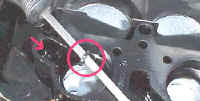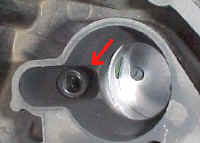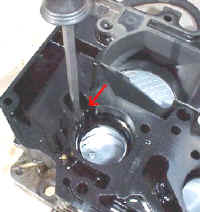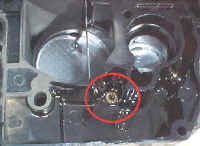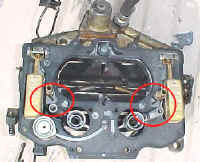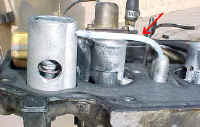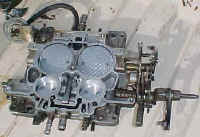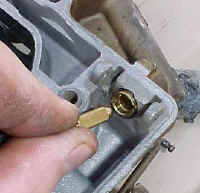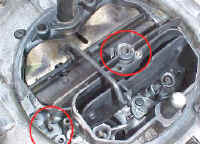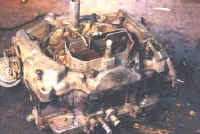 From the
outside, it appears to be just another carb. Well, that's about right. It
is very similar to the Quadra-jet in many ways. The big difference is the
two floats, the lack of secondary metering rods and the primary metering
rod adjusting screw. Oh, and the PLASTIC BODY!
From the
outside, it appears to be just another carb. Well, that's about right. It
is very similar to the Quadra-jet in many ways. The big difference is the
two floats, the lack of secondary metering rods and the primary metering
rod adjusting screw. Oh, and the PLASTIC BODY!
Remove all the screws and linkages and remove the air horn assembly from the carb. Be very careful not to bend the metering rods or anything else for that matter. Check the body of the carb to make sure it's not warped. Any little problems can be fixed with a sheet of 100 grit sandpaper and a flat surface. Just rub the top of the plastic body of the carb until it's flat again. If it's really bad, maybe it's time for a new carb. Pick up the paper and you'll find these little gems all over the place, usually 10 for a dollar! Those poor saps don't know what they have!
